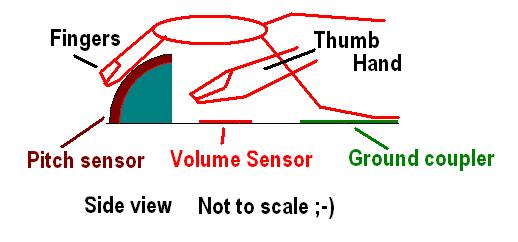OT
"I believe the electronic equipment used to analyze sound waves is actually a distraction because there are subtle elements in the sound that the machines don't detect. You might come up with a sound that looks identical to the sound of Clara Rockmore's theremin on the screen of your oscilloscope, but if you have ears to hear you know instantly it is light years away." - Coalport
You may be right on this, Peter.. And IMO you are certainly right about ones advantage if you have "ears to hear ".
But I dont believe that someone who does not have "ears to hear " is terminally disadvantaged, and I think there are a load of possible reasons why despite having the required equipment, people still get designs wrong.
It is my opinion (and its only an opinion - one I am inclined to because of my science / physics paradigm) that when designers get it wrong, its because they are failing to notice things the equipment is revealing, or are not using the equipment correctly, or are not (and I personally think this is the major reason) giving what appear to be irrelevant components their true 'weighting'.
And there are practical and financial reasons for this.. The 91 could never emulate the Claramin - Bob will have known this. All that was possible was to modify the analogue synth (inside the 91) to give a waveform slightly more like the Claramin.. But in order to have any chance of capturing the Claramin, an entire redesign would have been needed - The audio resonances from the transformers would need to be replicated, the mixer waveforms would need to be replicated, and thats just the start - The analogue synth in the 91 didnt stand a chance, it could NEVER do the job (IMO, of all the theremins ever designed, the 91 is probably the least likely to manage a Claramin sound - or at least the one requireing the most modification to do so)..
And Bob will have known this, even without doing a side-by-side analysis of the two instruments.. And if the instruments had been compared side-by-side, the test gear would have shown clearly that they would not, and could not EVER sound the same
But I dont think "the electronic equipment used to analyze sound waves is actually a distraction "
I think the "distraction" is time, complexity and cost... And the fact that one realises, the more that one is involved in this business, that there is no return for the effort.. There is much more return from making something and declaring it a "Claramin modification" than from actually engineering a passable "Claramin" mod.
The problem isnt the test gear, its people and time and money.
And this is where someone who has the "ears to hear" has some advantage - because designing to a set of waveforms is enormously time consuming (apart from which, obtaining suitable 'clean' reference waveforms is damn near impossible) - If one can listen to a recording of say the Claramin, and mentally "filter" out the other instrument/s, and create its sound on a simulator and then produce a prototype, you can be going in the right direction quicker than someone without "the ears".
But even after doing the above, to really get it right (and to ensure that you are not deluding yourself) running a comparison between the two instruments using analysers is, IMO, the only way to get close to "certainty".
"Curiously, none of the theremins manufactured by Moog ever came close to the sound of Lev's original instruments in spite of the fact that Dr. Bob had access to every laboratory apparatus ever invented. "
IMO, Bob was more 'into' a different kind of sound and a had an entirely different "mindset" with regard to sound - The whole subtractive synthesis direction is an entirely different paradigm to the kind of thing Lev was "into" - Lev didnt use 'scopes and frequency analysers because (apart from the fact that they werent available) he had no need to - he was not trying to copy anyone elses sound! .. If Lev had been trying to recreate the sound of a Moog VCF, he probably would have needed equipment to analyse it! (Even today, there are challenges in accurately replicating the sound of older synth modules, despite these being transistor based and much simpler in terms of resonances etc than what one gets from the Lev theremins)
Its actually a LOT easier to create a "new" complex sound generator than it is to replicate some complex generator with a different technology - If the parts hadnt become obsolete and technology hadnt moved on, replicating Lev's instruments would be easy.. But replicating Lev's designs using solid state components and not having access to the obsolete transformers etc which gave the tonal charactaristics, well - its a LOT harder!
Fred.
<this is why Im getting out - When experts declare that a Enkelaar sounds lik an RCA, and others add an "RCA Switch" to a Theremax, and the whole market is cluttered with hype and fallacy, Even if one did make a genuine Claramin clone, only a couple of people would come close to noticing - because only a couple of people could play it well enough to notice! .. Better to make something new and less difficult, where there might be some return.>


